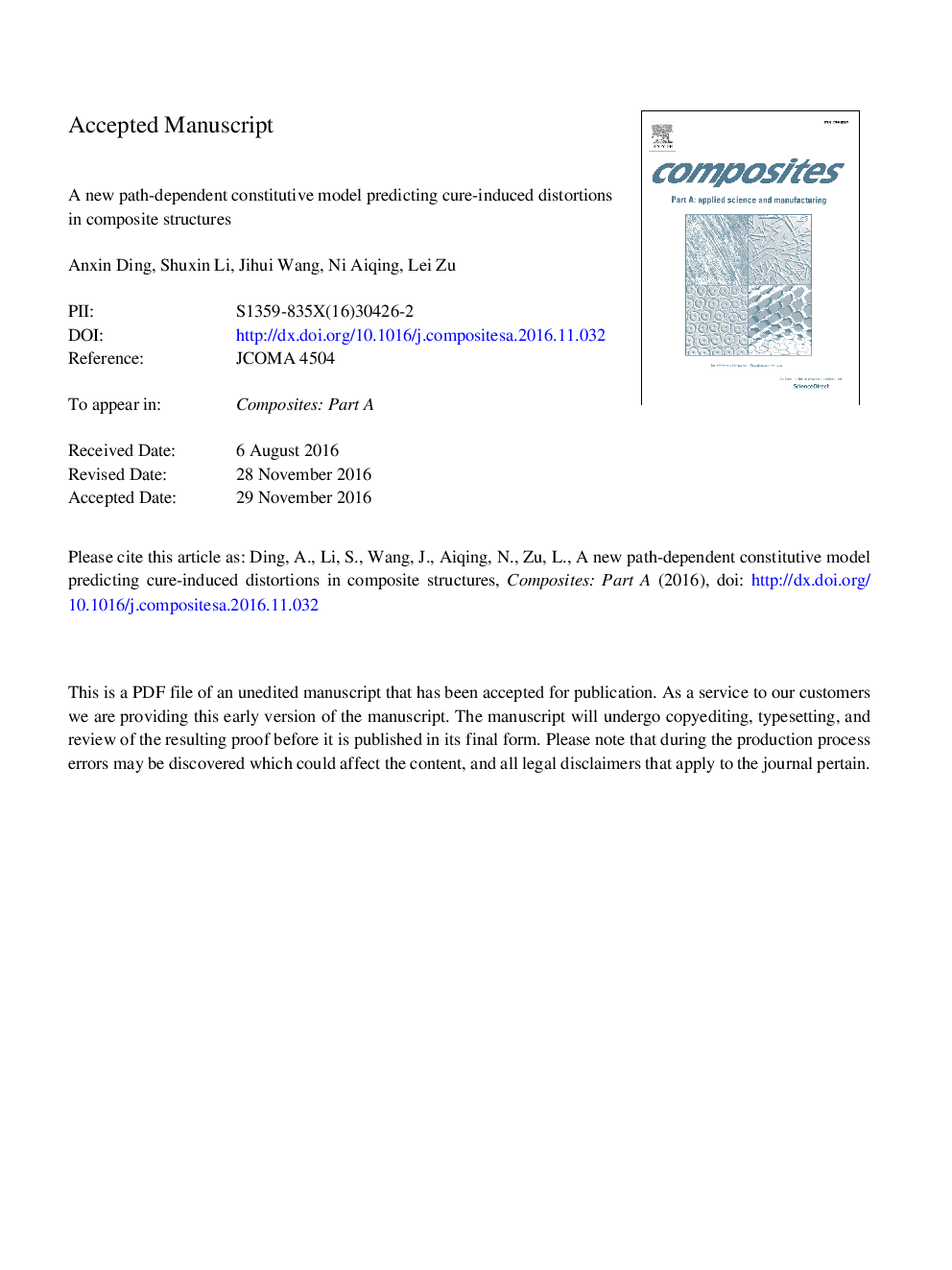| Article ID | Journal | Published Year | Pages | File Type |
|---|---|---|---|---|
| 5439760 | Composites Part A: Applied Science and Manufacturing | 2017 | 38 Pages |
Abstract
This paper presents a more general numerical path-dependent constitutive model for cure-induced distortions and residual stress analysis of orthotropic composite structures as compared to the path-dependent model presented by Svanberg and Holmberg (2004). The model is derived based on a limiting case that the shift factor or equivalent relaxation time is approximated as zero in the rubbery state and infinity in the glassy state in the linear orthotropic Thermo-rheologically Complex Materials (TCMs) viscoelastic constitutive model. The temperature dependent factor is incorporated into the rubbery and glassy state stiffness, which allows prediction of temperature dependent behaviour of composite structures in different material states during curing. The other important mechanisms, e.g. thermal expansion in different material states, chemical shrinkage and frozen-in distortion are also involved in the new path-dependent constitutive model to accurately predict the cure-induced distortions and residual stress in the composite structures. Furthermore, this new model is implemented into ABAQUS as subroutines and is validated by a good agreement between numerical results and analytical calculations for two numerical examples.
Related Topics
Physical Sciences and Engineering
Materials Science
Ceramics and Composites
Authors
Anxin Ding, Shuxin Li, Jihui Wang, Aiqing Ni, Lei Zu,
